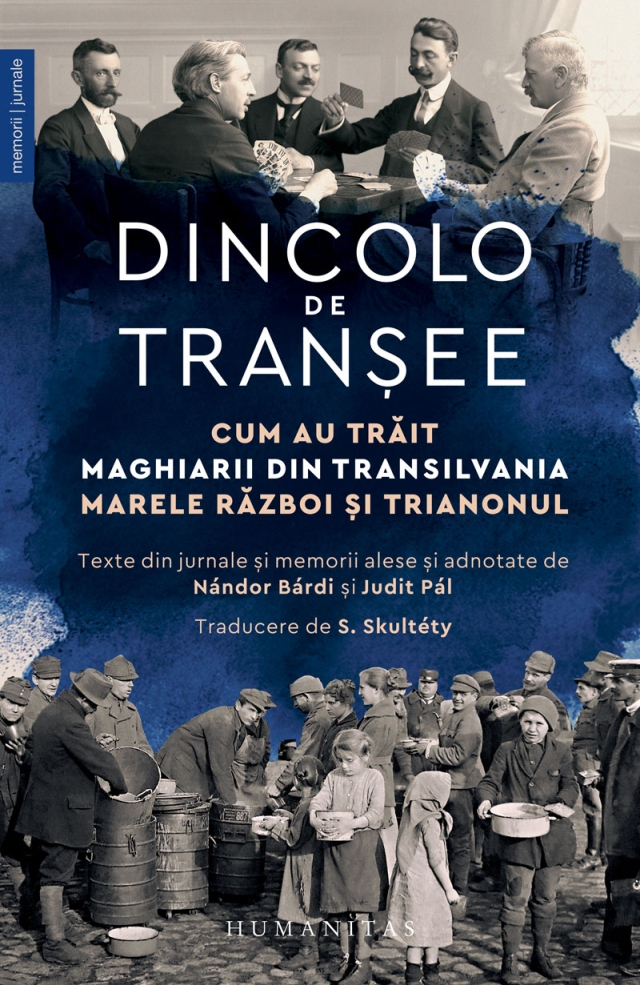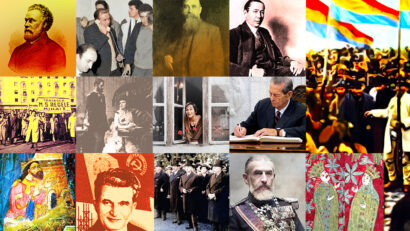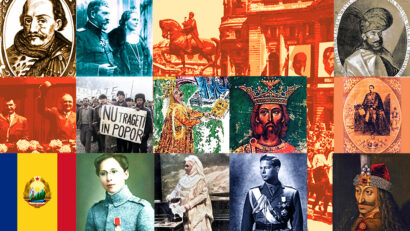World War One in Romania
The other side of World War One

Steliu Lambru, 27.03.2023, 14:00
Much has been written and, surely, more will still be written about World War One, the Great War as it had been dubbed at that time, and that, because the deflagration was something the world had not seen up to that moment. It was a tremendous mobilization of resources and people, made for the ideas of the age, for convictions and for utopias. And that, because the most eccentric ideas, before they are materialized, are oddities people get enthused with, when they deal with such ideas, yet being at once overcautious about them and rating them as forms of utopia. Everything that occurred in the aftermath of World War One, in 1918, would have been considered, before 1914, the year of the outbreak of the war, unachievable.
In the great conflict, Romania took sides with the English-French-Russian Entente, in 1916. The Romanian army, in 1916, fought on World War Ones longest front line, stretching north of the Carpathian ridge to the south of the Danube and the shores of the Black Sea. The Romanian army eventually conceded defeat, in 1916. With the support of the Russian army and the French military mission lead by general Berthelot, the Romanian army put up a successful resistance to the German and Austro-Hungarian armies, in 1917, who were advancing on the front line, in 1917. In 1918, in the wake of the Entente emerging as winner, the Old Romanian Kingdoms unification was possible, with the territories of the neighboring empires, with a predominantly Romanian-speaking population. For posterity, the year 1918 went down as a year of triumph, a year of celebration and the commemoration of all Romanians sacrifice for Greater Romania.
Savoring the victory of 1918 left little, if any, room for commiserating with the defeated, who lost almost everything. Austro-Hungary was dismantled and reduced to the territories where the ethnic populations of the two successor states, Austria and Hungary, were predominant. However, the real winners are those who find the time and the willingness to consider their opponents sufferance, to look, through the eyes of the losers, at how much they themselves had to suffer for victory. To that end, the volume edited by the Hungarian historians Nándor Bárdi and Judit Pál and titled “Over the Trenches. How the Hungarians of Transylvania experienced the Great War and the Trianon.” is a collection of documents of the time.
The historian Daniel Cain told us that, for the Romanians, the beginning of the war that led to the final victory was a much too optimistic one, with very little doubt as regards the real situation,
“I shall make reference, if I may, to an article that was a singular voice in the Old Kingdom press in late 1914 and early into 1915. It is an editorial published in a business magazine and also an attempted answer to those who were dead set on Romanias entering the war: fine, we advance into Transylvania, we make Greater Romania. What would our administrative model be, for those living in Transylvania? Do we have the required administrative experience to replace, for instance, the elite of the Transylvanian towns? It was a one-of-a-kind article, at that time, as there were extremely boisterous other articles targeting the necessity and the light-mindedness of a decision to be taken, for the Romanian Army to cross the Carpathians. “
The light-mindedness with which people cause real tragedies is typical for our minds and motivated by our good intentions. Human beings are self-delusional, believing, for instance, that a war ends up quickly, without much effort. It was the mindset of that particular generation and, as history has revealed, it was also the mindset of the generations to come.
Historian Daniel Cain:
“In order to illustrate that light-mindedness with which people viewed the war in the summer of 1916, in Bucharest there were two major incidents that occurred prior to Romanias entering into the war: an explosion at the armys Arsenal and another explosion at the ammunition storage in the Dudesti district. The following day, the press and mainly the Adevarul daily said measures had to be taken, because there were the spies who did it and 300 people were sacrificed, it was exactly the number of people who had to be sacrificed for the accomplishment of the national ideal, once the Carpathians had been crossed. So, in 1916, a great part of the public in the Old Kingdom was firmly convinced that Romanias entering into the war would be no more difficult than a walk.”
Here is historian Daniel Cain once again, this time highlighting the good points of a thought-provoking volume, a book where we can find the same experiences that are typical for wartime. Its just that theyre being viewed from the other side.
“It practically offers several answers to several questions, it provides an extremely varied image of what, first and foremost the experience of the war mean, for the ordinary people who fatefully felt the pressure of those trying times. Here we have testimonies of experiences that mainly boil down to uncertainty, to the uncertainty of tomorrow, to fear. Just put yourselves in the shoes of those living in the border localities, where, all of a sudden, the next day they see another army marching into their locality. And what they see is a change, a withdrawal of the local administration, a replacement of the local administration, only to see that, in a couple of days or in a few weeks time, the former state of things would again be put in place.”
The volume “Over the trenches… is more than an invitation to reading. It is an urge to view a glorious year, such as 1918 was for the Romanians, from the other side, the side of the defeated ones, it is an urge, for winner and losers alike, to share the sufferance. (EN)






























